
FAQ
-
Pest Library
-
Ants
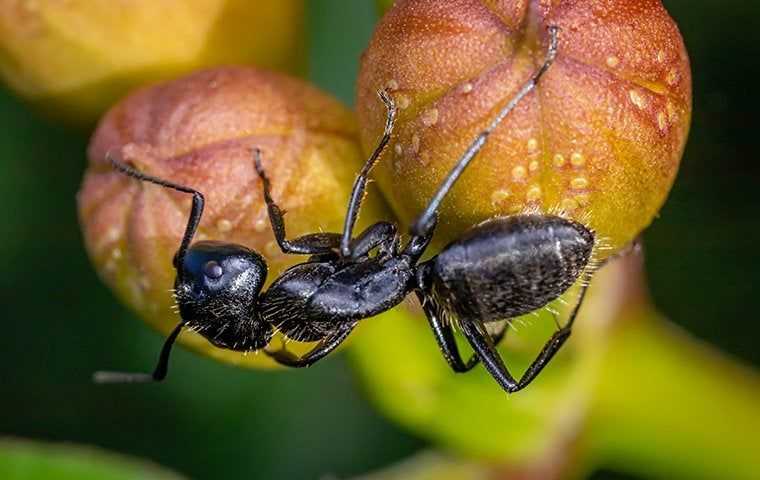
 Ants are insects that are scavengers, opportunistic, and social. When combined, those three things are why they are so common around our New York homes and businesses. Our properties provide ants with easy access to food, water, and nesting sites, and they take full advantage. When ants take over our properties, they quickly wear out their welcome. Ants usually aren't super dangerous, but they do take over in large numbers and contaminate food, spread bacteria, and some bite or sting.
Ants are insects that are scavengers, opportunistic, and social. When combined, those three things are why they are so common around our New York homes and businesses. Our properties provide ants with easy access to food, water, and nesting sites, and they take full advantage. When ants take over our properties, they quickly wear out their welcome. Ants usually aren't super dangerous, but they do take over in large numbers and contaminate food, spread bacteria, and some bite or sting.Most ants like to nest outside in fallen trees, woodpiles, and damp soil under mulch and trash cans or next to sidewalks and foundations. When ants nest near our homes and leave their nest to forage for food, they often wind up in our homes. Food odors from trash cans, kitchens, and pet food are just too much for them to pass up. Their small size means that keeping ants out of our homes is tricky because they can move indoors through the tiniest of spaces.
Use the following ant control strategies to keep ants out of your home:
- Seal gaps around cables, pipes, and wires entering your home.
- Use caulk to fill in cracks in the foundation.
- Install door sweeps and weatherstripping around windows and doors.
- Repair damaged trim, siding, and roof shingles.
- Cut back landscaping from your home's exterior to help keep the soil dry around the perimeter of your home.
For professional help with ant control, contact us today at (516) 202-7254.
-
Cave Crickets
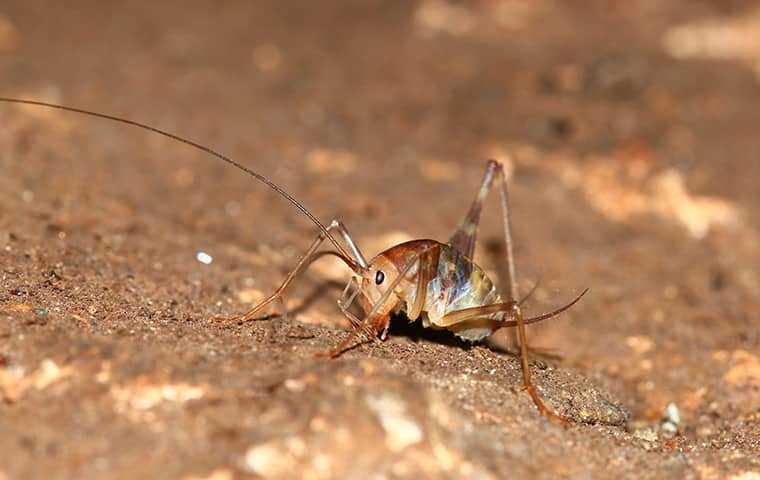 One of the more common species of crickets in New York is the cave cricket. Cave crickets have curved backs, round brown bodies, and long powerful legs. Their humpback is why they are also called "camel crickets." Cave crickets do not produce the chirping sound that most people associate with crickets which can make finding them in your New York home tricky.
One of the more common species of crickets in New York is the cave cricket. Cave crickets have curved backs, round brown bodies, and long powerful legs. Their humpback is why they are also called "camel crickets." Cave crickets do not produce the chirping sound that most people associate with crickets which can make finding them in your New York home tricky.Cave crickets live outside in dark, moisture-rich areas. Our outdoor spaces often provide cave crickets with a suitable environment to call home. When living close to our structures, it is easy for these insects to move indoors through gaps under doors or through vents and drains. Cave crickets move into homes when their outside environment becomes too hot and dry for them to remain comfortable. Inside, cave crickets gather in damp, dark places like basements, crawl spaces, and the bottom of closets.
Use the following pest control strategies to keep cave crickets out of your home:
- Seal spaces in the foundation of your home and install door sweeps.
- Place covers over vents and drain.
- Maintain gutters to keep the soil around the perimeter of your home dry.
- Use dehumidifiers to reduce humidity levels in your home and make it less attractive to camel crickets.
For exceptional pest control in Nassau County or New York's five boroughs, partner with the locally owned Pied Piper Pest Control. Through outstanding customer service and high-quality pest control, we protect communities against pests. Call now to learn more about our residential pest control or commercial pest control solutions!
-
Cockroaches
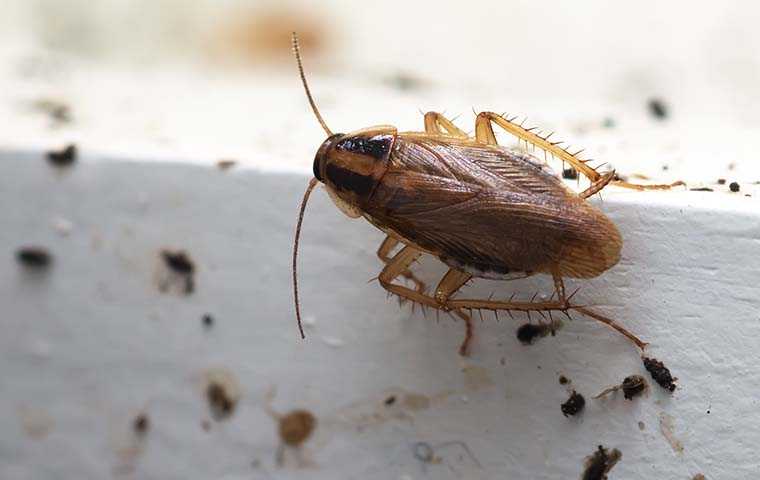 The large majority of cockroach species live outside and away from people. They are scavengers that help eliminate decaying organic matter and act as a food source for many large predators. However, three species have made themselves household names and become comfortable living with people in our homes and businesses; American cockroaches, German cockroaches, and Oriental cockroaches.
The large majority of cockroach species live outside and away from people. They are scavengers that help eliminate decaying organic matter and act as a food source for many large predators. However, three species have made themselves household names and become comfortable living with people in our homes and businesses; American cockroaches, German cockroaches, and Oriental cockroaches.Having any cockroach in your home is problematic and dangerous. Cockroaches spend their lives scavenging for food sources, and when in our homes, they feed on crumbs, spills, and your family's stored food. Cockroaches contaminate more food than they consume, leading to food waste. These insects also spread many diseases, bacteria, and allergens. The best way to maintain a cockroach-free household is to implement regular, year-round pest control services.
Use the following cockroach control strategies to keep cockroaches out of your home:
- Eliminate excess moisture by repairing leaky pipes and fixtures. Keep drains clear of debris.
- Maintain a clean kitchen, regularly remove the trash, and store food in the fridge or airtight containers.
- Seal cracks in your foundation, install door sweeps, and place mesh covers over vents.
- Always check secondhand items and deliveries for roach before bringing them into your home.
For professional help with cockroach control, contact us today.
-
Mosquitoes
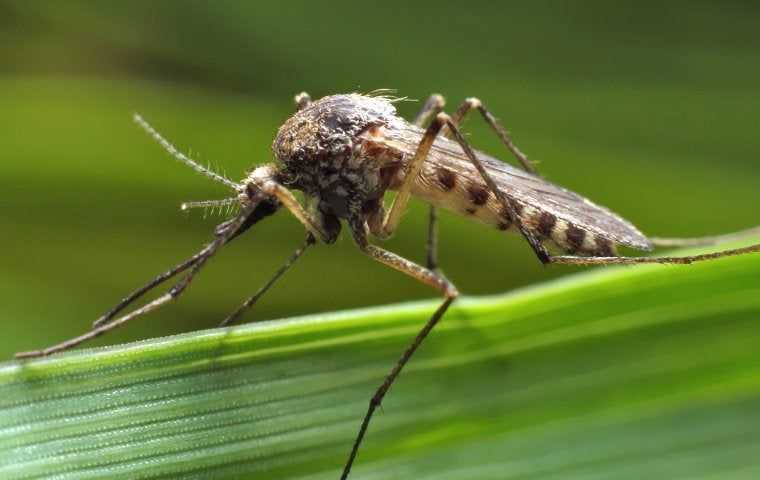 Mosquitoes thrive in warm, humid temperatures, which is why in New York, these pests make our summer months miserable. Mosquitoes breed quickly and create large populations on any property that provides them with their basic needs. Things that attract mosquitoes to our outdoor spaces include standing water (breeding sites), tall grass (resting spots), and flowers (plant nectar to feed on). Females also require blood meals to create their eggs, so they bite people and other warm-blooded mammals.
Mosquitoes thrive in warm, humid temperatures, which is why in New York, these pests make our summer months miserable. Mosquitoes breed quickly and create large populations on any property that provides them with their basic needs. Things that attract mosquitoes to our outdoor spaces include standing water (breeding sites), tall grass (resting spots), and flowers (plant nectar to feed on). Females also require blood meals to create their eggs, so they bite people and other warm-blooded mammals.In addition to being annoying and driving us indoors because of their relentless bites, mosquitoes are dangerous. Their ability to spread diseases to their various hosts makes them one of the world's most dangerous creatures. Mosquitoes spread diseases and parasites to people and animals during the feeding process. Controlling mosquito populations on your property is necessary for your sanity and your health!
Use the following pest control strategies to reduce your contact with mosquitoes:
- Get rid of containers from your yard that can collect water.
- Make sure gutters are clear and aren't allowing standing water to collect in them.
- Ensure your yard is maintained to reduce mosquito resting spots.
- Replace or repair any loose or damaged window screens to keep mosquitoes out of your house.
For professional help with mosquito control, contact us today.
-
Rodents
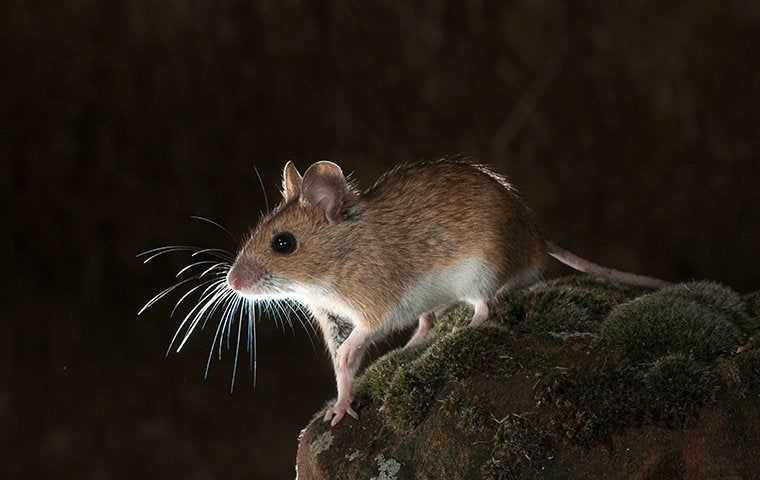 Rodents make up the largest group of mammals and vary significantly in appearance, behaviors, and feeding habits. While most of the worlds' rodents live outside, well away from people, able to survive independently, some have discovered the benefits of living with people. Our homes and businesses provide opportunistic rodents easy access to things that make their lives easier; food, water, and shelter.
Rodents make up the largest group of mammals and vary significantly in appearance, behaviors, and feeding habits. While most of the worlds' rodents live outside, well away from people, able to survive independently, some have discovered the benefits of living with people. Our homes and businesses provide opportunistic rodents easy access to things that make their lives easier; food, water, and shelter.Having a property overrun by rodents is never ideal. Rodents cause structural damage with their sharp front incisors, contaminate food, cause food waste, and worst of all, spread diseases and parasites that make people and animals ill. Rodents are prolific breeders meaning that just a couple finding their way into your home while searching for shelter or food can lead to a difficult-to-manage infestation in no time at all!
Use the following rodent control strategies to keep rodents out of your home:
- Regularly remove trash from your house, and store food in the fridge or airtight containers.
- Regularly vacuum your home and wipe down surfaces to remove food debris and food odors.
- Inspect your home's exterior, sealing any openings you discover with caulk, steel wool, or another material that can stand up to a rodent's sharp teeth.
For professional help with rodent control, contact us today.
-
Termites
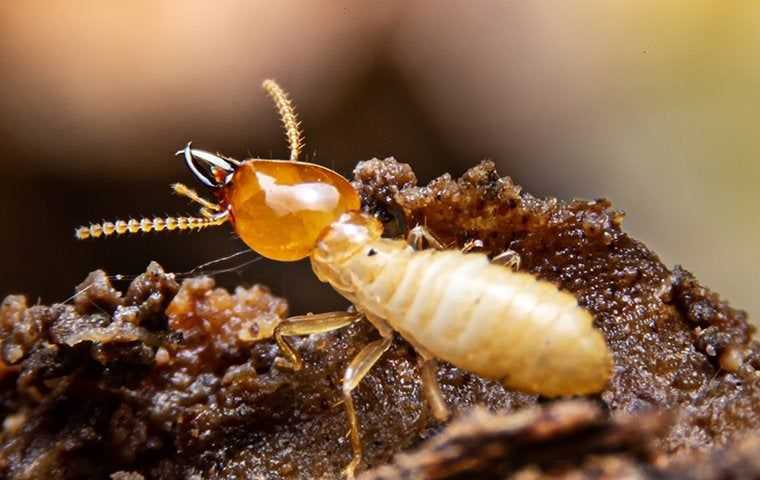 Termites are well-known to most homeowners because of their unique feeding habits. Cellulose found in trees, wooden structures, and other materials provides their sole source of nutrition. While individual termites may be tiny, when these social insects invade a structure by the thousands, the damage they cause is significant and costly. Termites enter our homes mainly unseen and can work for years without notice; the biggest reason these pests are so dangerous.
Termites are well-known to most homeowners because of their unique feeding habits. Cellulose found in trees, wooden structures, and other materials provides their sole source of nutrition. While individual termites may be tiny, when these social insects invade a structure by the thousands, the damage they cause is significant and costly. Termites enter our homes mainly unseen and can work for years without notice; the biggest reason these pests are so dangerous.The most common termite species in our region is the subterranean termite. Characteristics of these termites include their high moisture needs, underground nests, and preference for feeding on water-damaged or decaying wood. Worker termites leave the nest each day to gather food to bring back to the nest. Their most common entry points into any structure are through pieces of wood making contact with the soil and cracks in a foundation. Once termites discover a suitable food source, they return day and night to gather food for their colony, causing more and more damage each day.
Use the following termite control strategies to guard your property against termites:
- Keep the soil around the perimeter of your home dry by cutting back landscaping and using gutters.
- Quickly repair leaky pipes in your home.
- Repair any damaged roof shingles, siding, and weatherstripping to help prevent rainwater from getting into your home and causing water damage.
- Seal cracks that develop in your foundation.
- Make sure your home is well-ventilated.
For professional help with termite control, contact us today.
-
-
Crickets
-
What do cave crickets look like?
Cave crickets, or camel crickets, and spider crickets have a few signature identifiers that make them hard to mistake, including:
- A brown body, often covered in various shades of brown spots
- A large, hump-shaped back with 6 legs
- Large, drumstick-like back legs
- A long set of antennae
Although cave crickets are wingless, their long back legs allow them to make powerful jumpers, making them both difficult and nerve-wracking to catch. Cave crickets also have a long set of antennae and do not chirp like other crickets.
-
What attracts cave crickets?The cave cricket is active all year-round, and while usually residing in cool, damp areas, they begin searching for warmer places to spend the fall and winter in New York. You can find them hanging out around your foundation, and ultimately inside your home. Cave crickets lay eggs in the spring that will hatch within a few weeks. Because of their behavior, you will usually see a spike in cave cricket activity in the spring as they're hatching and in the fall as they're moving into warmer areas.
-
Can cave crickets cause damage?While camel crickets do not usually bite people, they do have chewing mouthparts that can cause damage to materials such as fabrics or clothes. Cave crickets are not poisonous and are more often seen as a scary nuisance more than anything.
-
How can I get rid of cave crickets?
Pied Piper Pest Control offers an integrated pest management (IPM) approach to cave cricket control, which includes an assessment of your property and exclusion suggestions, as well as environmentally friendly treatment options. Homeowners can take steps to prevent cave crickets from invading their homes, such as:
- Eliminating moisture in basement areas by using a dehumidifier
- Sealing cracks and crevices around the foundation
- Inspecting and sealing windows and checking screens for holes
- Clearing debris away from the structure of your home to eliminate possible breeding sites
Check out our other pest control services to see how we can better serve your family, removing cave crickets and a variety of other pests around your home.
-